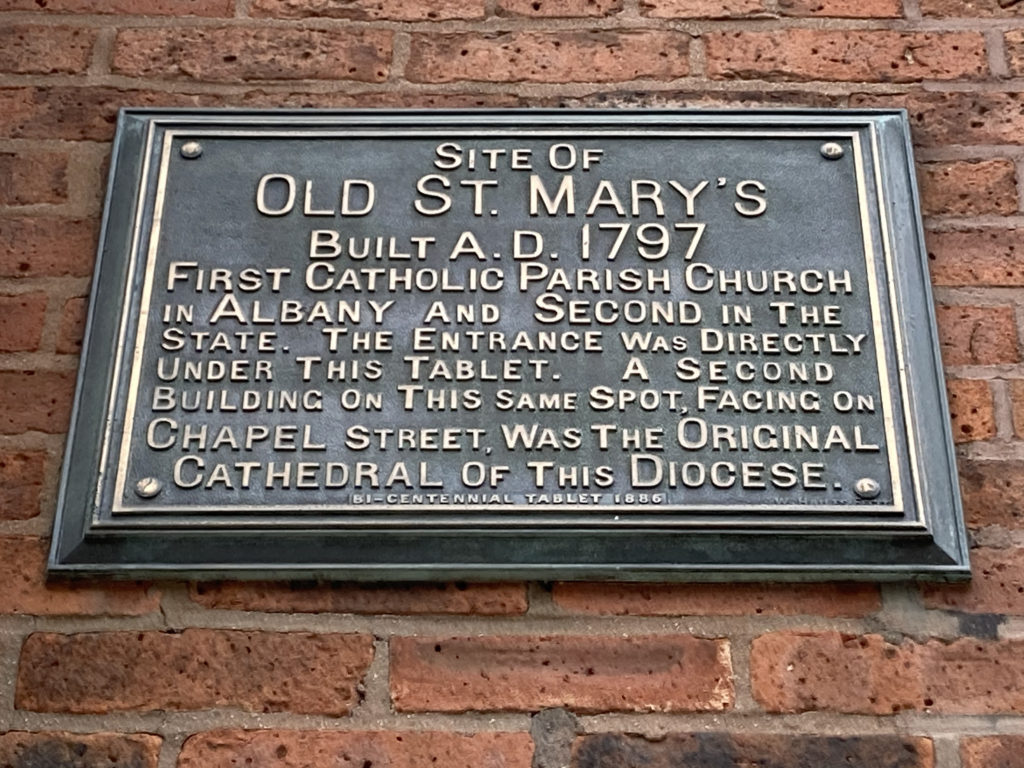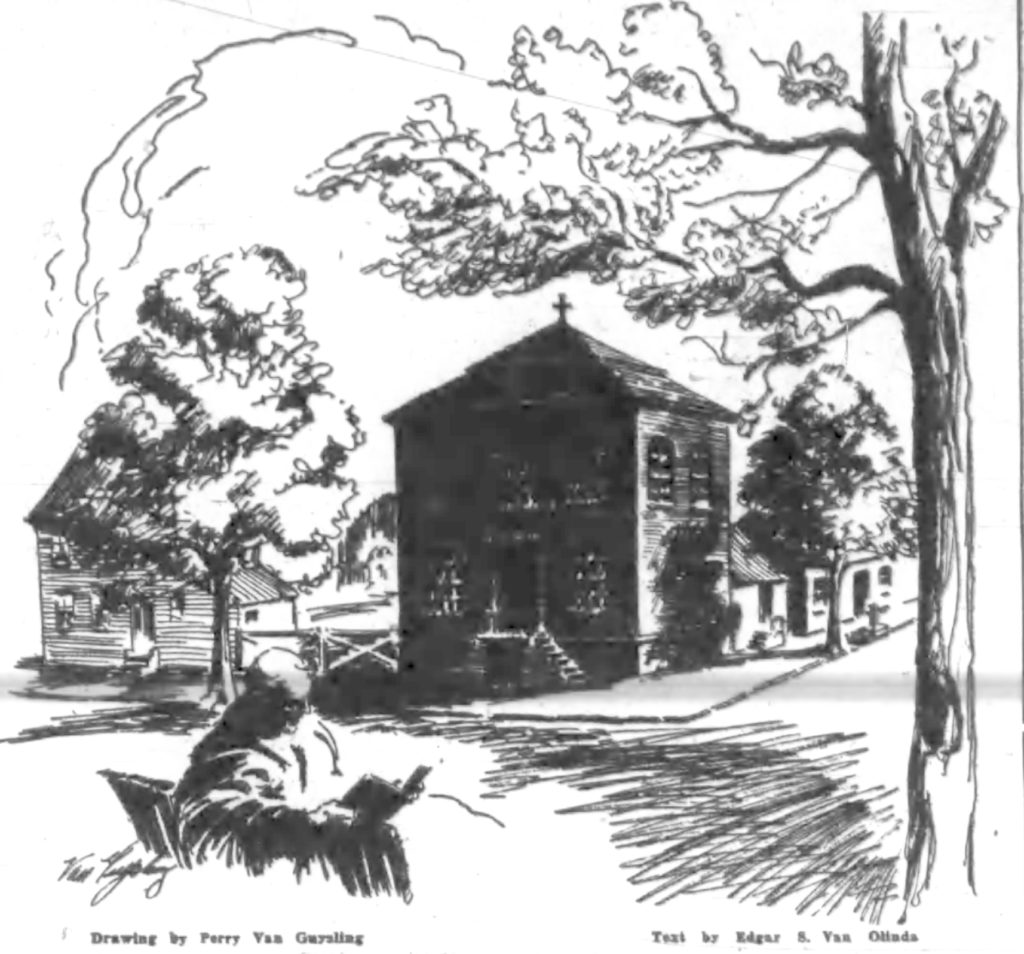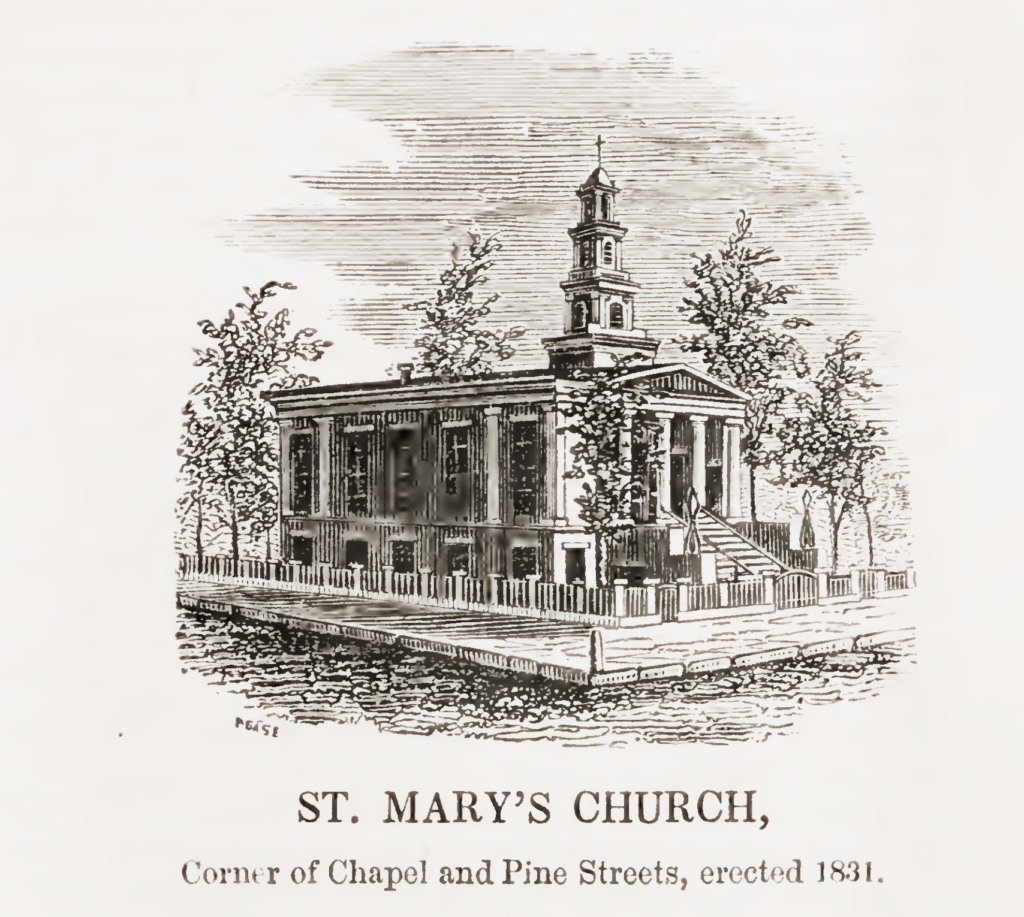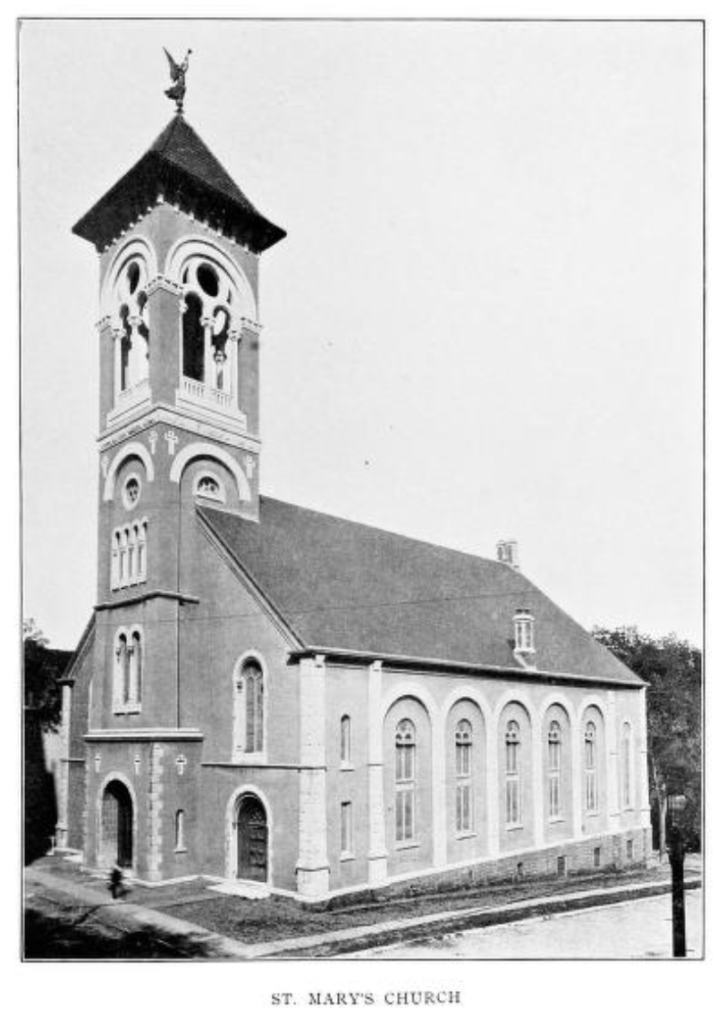Continuing with the eighth in our series covering the tablets that were placed around the city of Albany (and a little beyond) in honor of the bicentennial of the city’s charter, in 1886. This one commemorated the first Catholic church in the city, which came pretty late in the city’s development.
Tablet No. 8—Old St. Mary’s.
Bronze tablet, 16×22 inches, inserted in wall of present edifice of that name on Pine street. Inscription :
“Site of Old St. Mary’s Built A. D. 1797. The First Catholic Parish Church in Albany and second in the State. The entrance directly under this Tablet.
“A Second Building on this Same Spot, Facing on Chapel Street, was the Original Cathedral of this Diocese.”

Martin Joseph Becker’s “A History of Catholic Life in the Diocese of Albany, 1609-1864” notes that the first Catholic Mass in New York was Nov. 14, 1655, at Indian Hill, two miles south of what is now Manlius, at what became a mission to the Iroquois. But in the Hudson Valley, Catholics were few — with the notable exception of Thomas Dongan, Catholic governor of New York from 1683-1688, in the time when James II, who had converted to Catholicism, ruled England. Then, under William and Mary, tolerance of Catholics was no longer official policy, and “Jesuits, priests and popish missionaries” were outlawed in 1700. That situation continued in the colonies until the revolution, so the only noted Catholics were random immigrants in the Mohawk Valley, and the Iroquois at Akwesasne. After the revolution, New York’s constitution of 1777 allowed all religions, and the ban on priests was eventually lifted in 1784.
In 1796, the Albany Gazette noted the success of a subscription for “erecting a Roman Catholic chapel in this city. It bespeaks the tolerant and liberal disposition of the country, to find out citizens of every persuasion emulous in assisting their Roman Catholic brethren with the means of building here a temple to the God of heaven, in which they can worship according to the dictates of their own consciences. The corporation [city] unanimously resolved to present them with a piece of ground for the site of their church.” The cornerstone was laid by merchant Thomas Berry Sept. 13, 1797 at a site on what was then called Barrack street, now Chapel.
Munsell, in his Annals of Albany Vol. 4, includes an article from the Albany Gazette of Sept. 10, 1798, proclaiming, “It is with the most heartfelt satisfaction, says a writer in the Gazette, that we can inform our brethren of the Roman Catholic faith, that their church in this city is so near completed as to be under roof, glazed and floored (fire proof). That it is a neat building, and will be an ornament to the city, and a lasting blessing to all who are members in communion of that church.”

There were a number of indications that the building, which was built of brick and “fifty feet square,” was completed without being finished, precisely. In Feb. 1807, “Notice was given that a sermon would be preached in the Roman Catholic church, on Sunday morning, Feb. 22, by the Rev. Mr. Hurley, for the purpose of raising a collection to assist in finishing the inside of said church.”
It was this first church that was visited by the Marquis De Lafayette on his visits to Albany during his later tour of the United States; it has been repeatedly asserted that he heard mass in the church (from Rev. John Lewis Savage) in June 1825.

It wasn’t terribly long before that church was insufficient for its purpose, and it was replaced with a new church on the same site. The cornerstone for the second St. Mary’s, designed by Philip Hooker, was laid Oct. 13, 1829, and the church opened for services on August 29, 1830. Also constructed of brick, it reportedly cost $31,000. (During construction, the congregation held services in the Lancaster school, the Philip Hooker-designed building on Eagle Street, which would later be the first home of the Albany Medical College.) In 1847, St. Mary’s became the Cathedral parish for the new Albany Diocese, but only for a short time, as the cornerstone of the Cathedral on Eagle Street was laid July 2, 1848, and the building dedicated Nov. 21, 1852.

Despite that and the development of other Catholic churches, it was decided that another new St. Mary’s was needed, and a cornerstone for a new church was laid August 11, 1867, and the new church dedicated March 14, 1869. (This one faced Lodge Street, instead of Chapel.) A major, four-year renovation was completed in 1894, overhauling the interior and adding the tower with its iconic “Angel of Judgment” statue. At this time St. Mary’s became the first church building in Albany to have electric lights; they were very proud of having eight different circuits that allowed them to light any section of the church individually.
The third St. Mary’s still stands today. Since then, we presume additional lighting has been installed.

Coming late as they did, the Catholics did not have a chance to fill downtown Albany with burials (unlike some other churches). They did have a section at the State Street Burying Grounds (now Washington Park), and in 1867 established their own cemetery, St. Agnes in Menands.

Leave a Reply